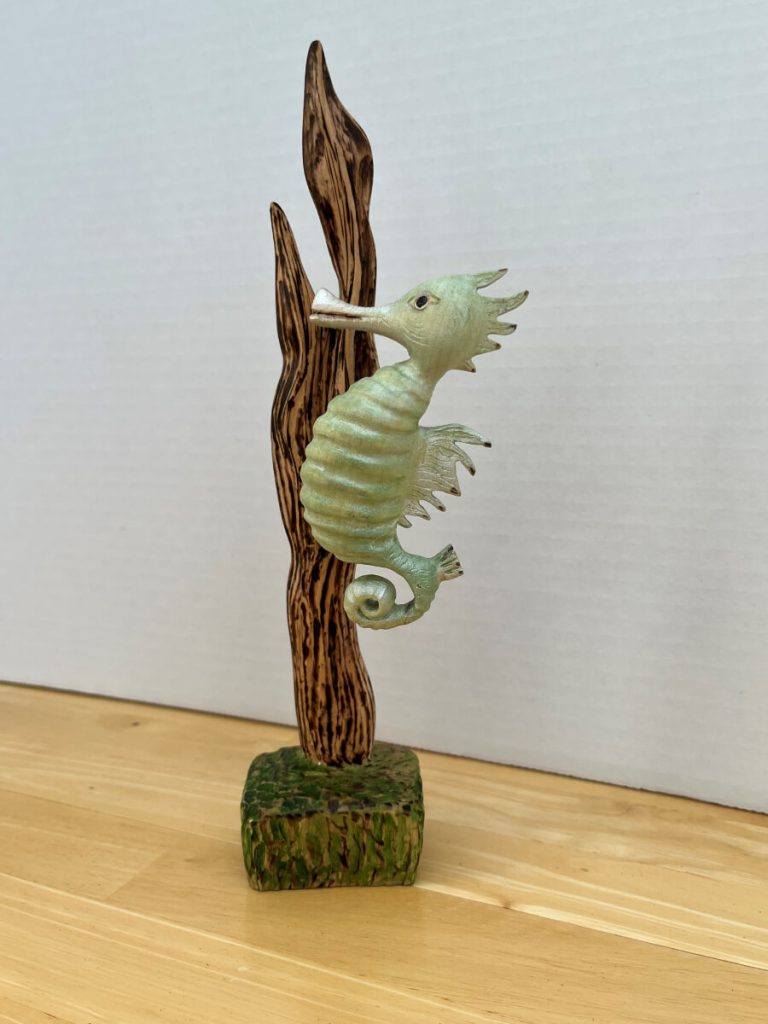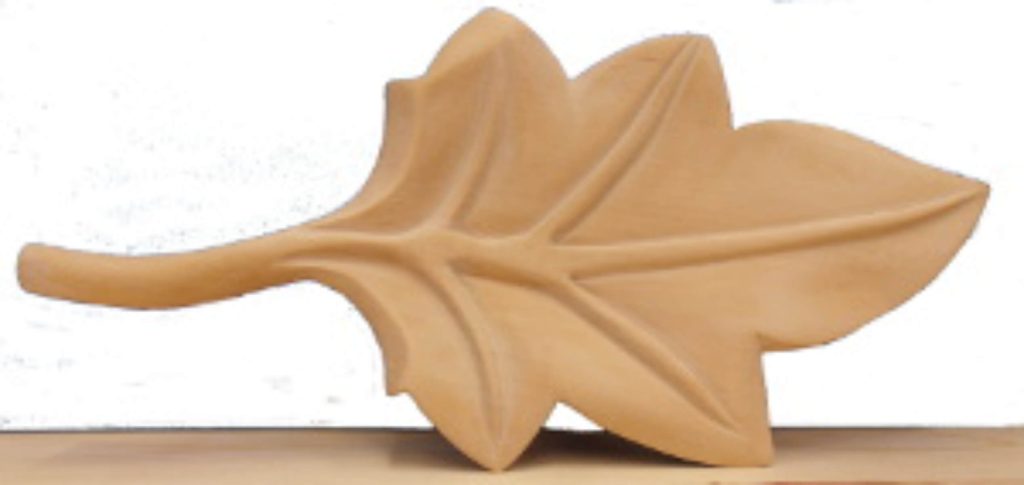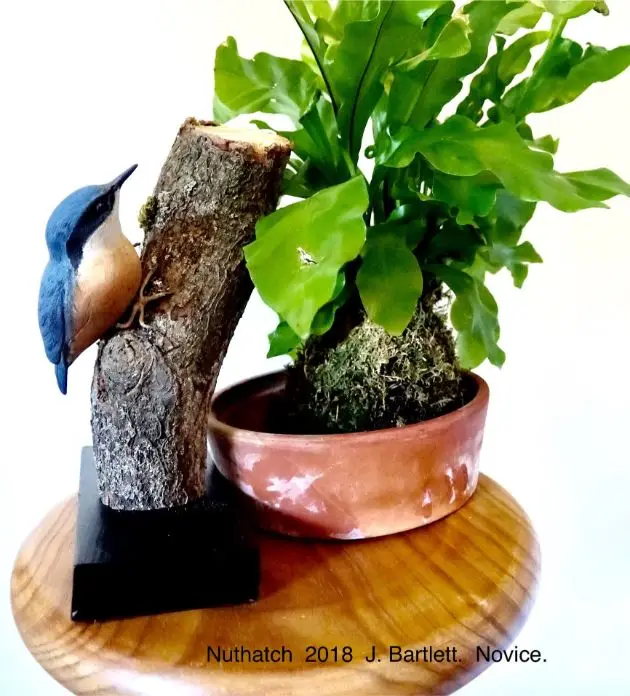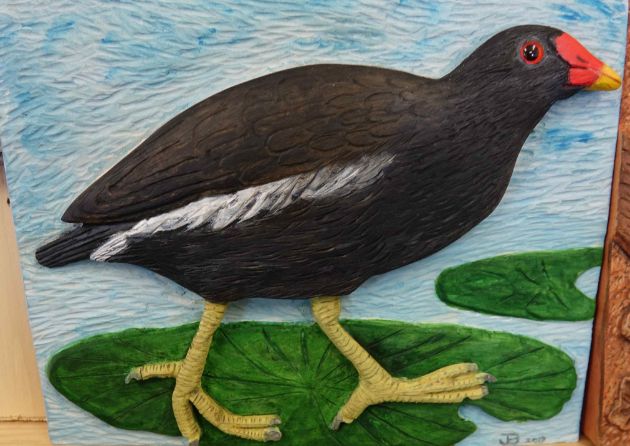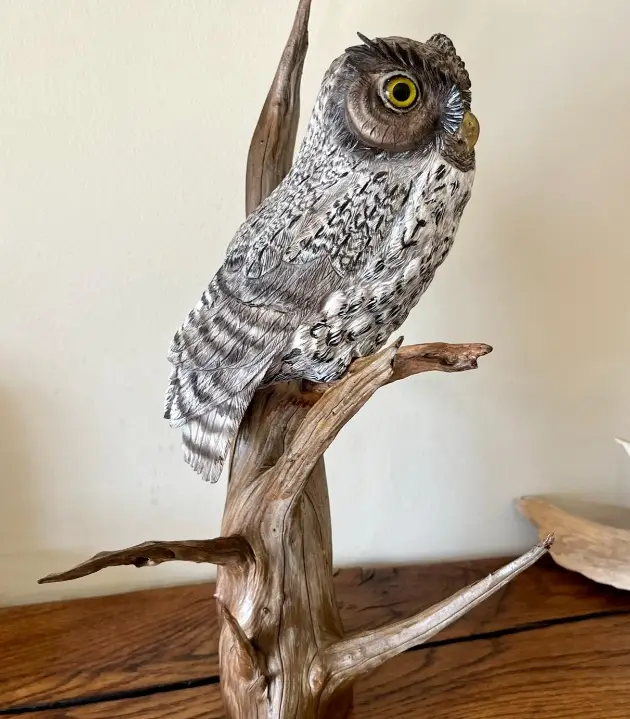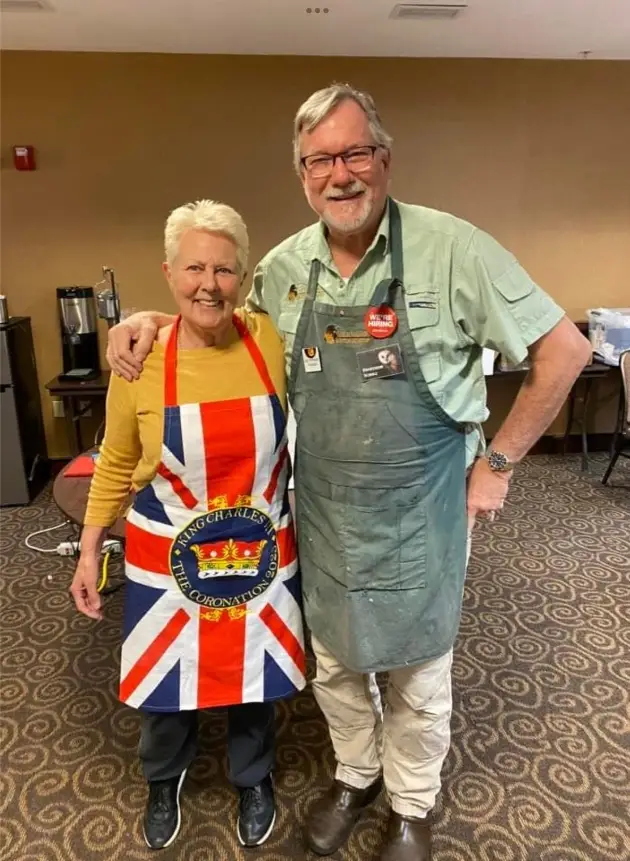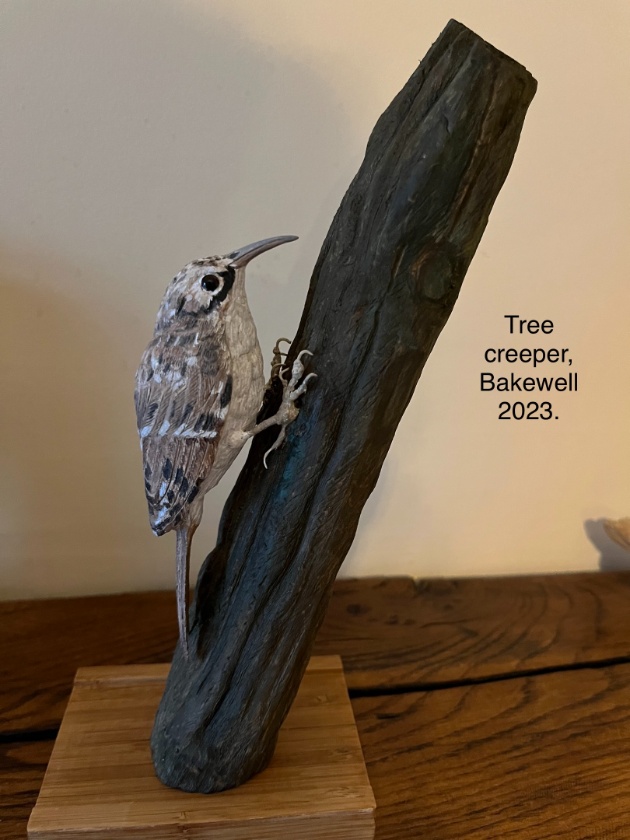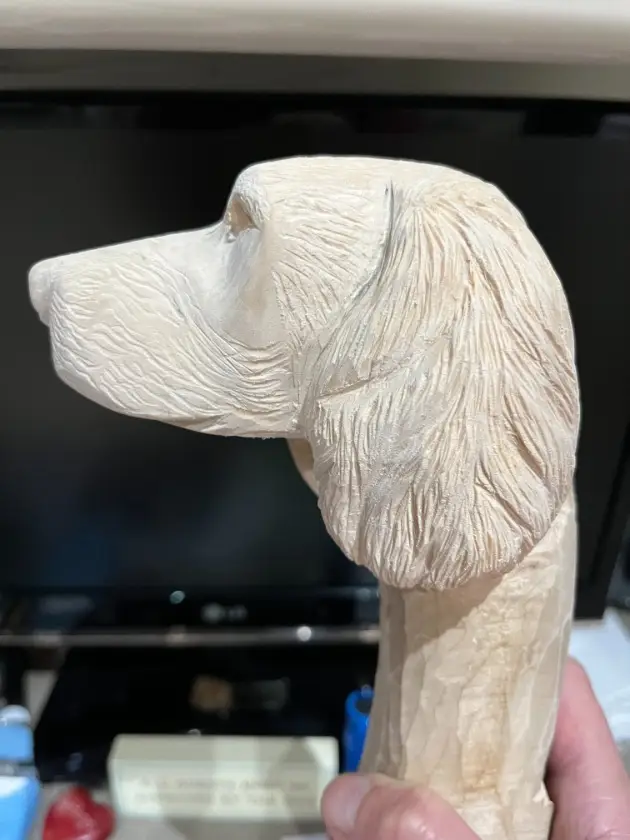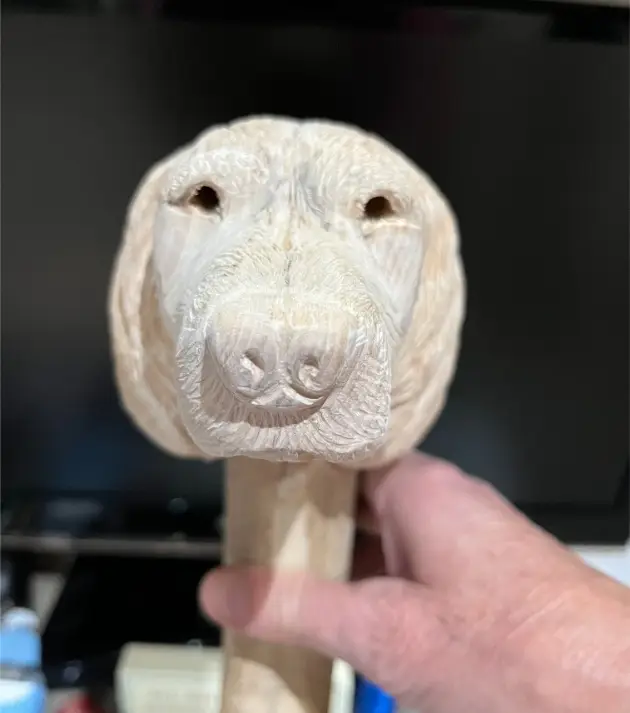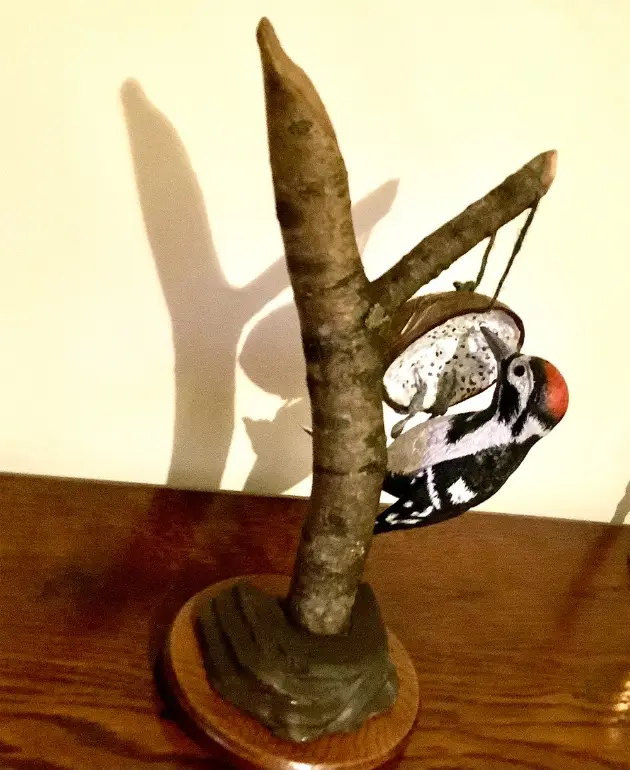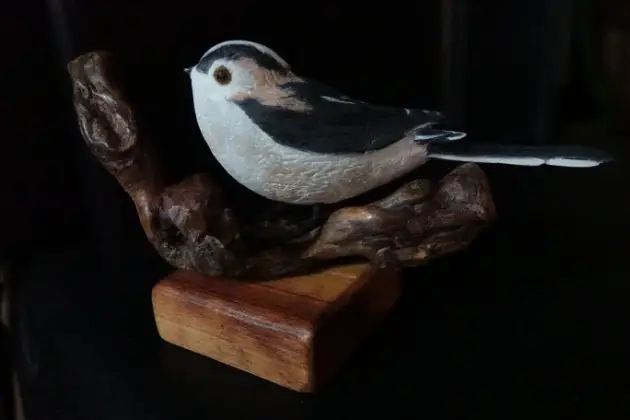Jan Bartlett
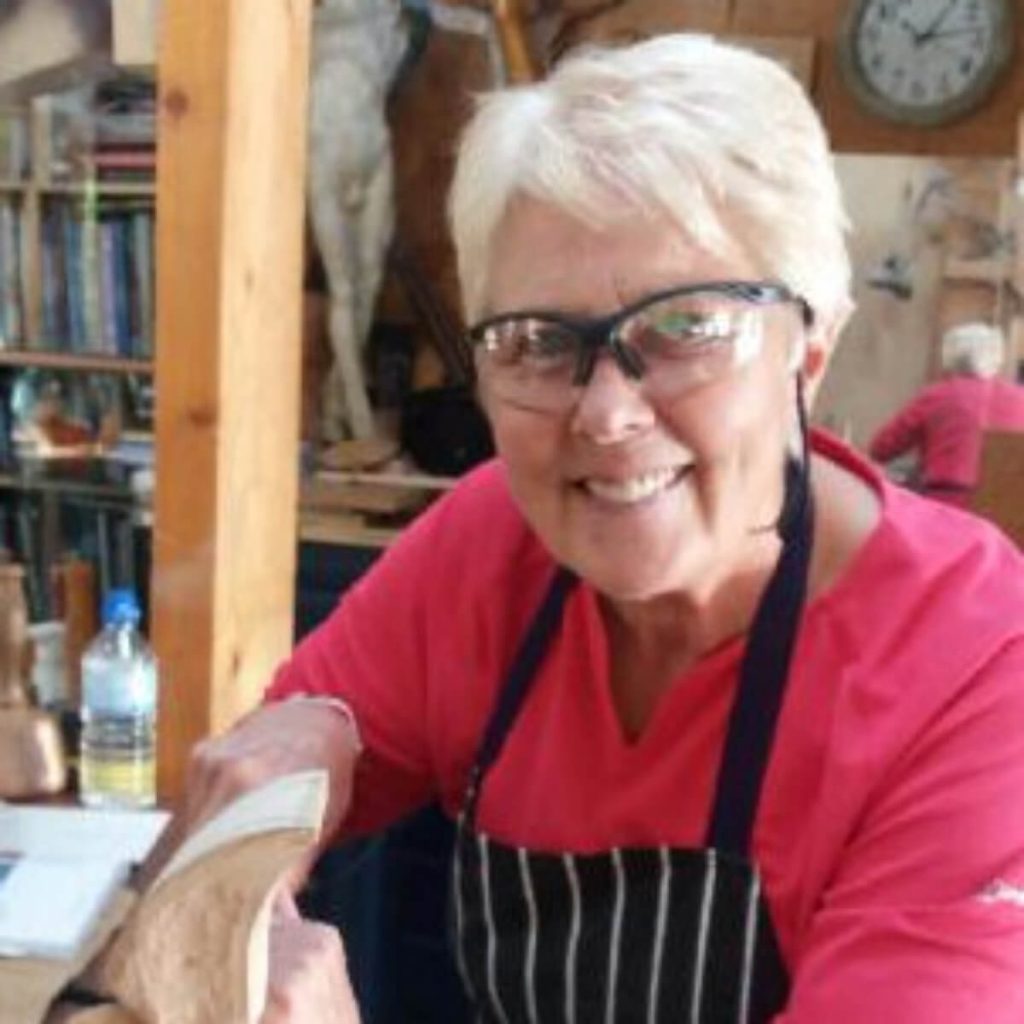
Jan Bartlett, of Holmesfield, is a passionate wood carver, especially of wild birds. She tells Deborah Wain more about her fascinating hobby.
As the daughter of a cabinet [A]maker, Jan Bartlett developed a love of wood during her childhood in Plymouth.
“I’d be the one in my dad’s shed touching things, and I think that’s where my interest started,” she said.
Fast forward to Jan’s days as a student when she would supplement her income by sanding back old darkly-stained tables to reveal the beautiful grain of the wood beneath.
However, it wasn’t until her retirement following a career in the Women’s Royal Air Force and later in education and youth services, that Jan finally got around to realising a burning desire to learn wood carving.
By then she was living locally and in 2016 decided to join Dronfield Wood Carving Club, which meets at Henry Fanshawe School.
Jan found immediate encouragement and help from fellow members, including the late John Oldale, who was then chairman.
Improved
The first thing Jan made was a leaf, carved out of soft lime wood, and she gradually improved, although making plenty of mistakes along the way!
A real turning point came in 2018 when she called in at ‘a bird fair’ at the Agricultural Business Centre, in Bakewell. Actually, it was a display of work by members of The British Decoy & Wildfowl Carvers Association.
Jan said: “I entered that room and it changed my life. I saw all of these birds
carved from wood and I thought ‘Wow!’
“Until then, I hadn’t known anybody who carved birds. I love birds and I’m a keen
bird watcher so I wanted to have a go. And from there I’ve got
addicted!”
The association promotes and develops the art of wild bird carving and hosts the British Bird Carving Championships and annual competitions each year in Bakewell.
There are three styles of carving- decoy, decorative and interpretive. The decoy style reflects the origins of the art when decoys were made as a hunting aid, although today decoys are mainly used for weighing, ringing and checking the general health of a species. Carvings must depict the salient features of birds but may be of quite a simple design.
Decorative carvings, on the other hand, aim to recreate lifelike depictions down to the finest detail and dimension.
At the other end of the scale is interpretive work, allowing artists the freedom to produce a representation of a bird.
Jan joined the Trent Valley Bird Carvers group for a while and produced her first bird carving – a decorative nuthatch.
“I remember holding it in my hand and being thrilled that I had created the shape of a bird. I was amazed at what I could achieve,” she commented.
Then she attempted an interpretative piece – a stunning tern.
Both artworks won Jan gold medals in novice classes at the BDWCA annual competitions.
She has since earned a bronze medal in an intermediate class and she also finished first in a class in a virtual competition run by the Wildfowl Carving Association in the United States during the pandemic.
The art is hugely popular in America, where the decorative side primarily originates.
While she is pleased to win competitions, Jan says it is a love of carving that spurs her on.
Her own process of turning a block of wood into a bird artwork involves a mix of hand and machine tools.
The first stage is the carving itself, next the intricate feathers are burned into the wood. If the carving is to be painted, it is done with multiple washes of colour.
Working in harmony with the natural properties of the wood is key. lt can take Jan into the hundreds of hours to finish a piece.
Jan’s latest work in progress is an American Peregrine falcon begun on a course in Vermont with one of the world’s leading carvers Floyd Scholz. The course attracted carvers from all over the United States with the falcon fashioned out of tupelo – a soft wood found in the US.
Jan describes her hobby as “therapeutic and fairly inexpensive” -with patience being the overriding requirement.


